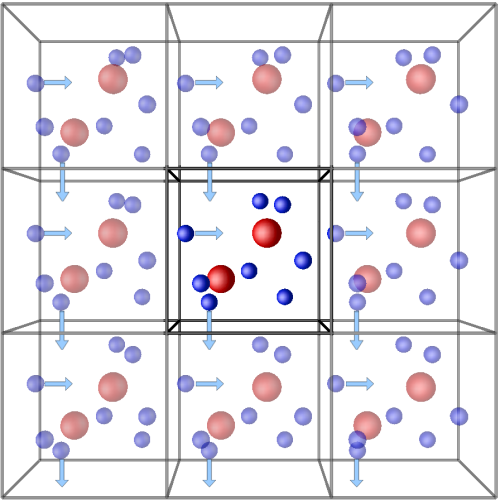Taking into account the finite size of model/simulation box is crucial to computing correctly many of the structural characteristics (e.g. rings statistics) of the system being studied.
The importance of the finie size of model box can be illustrated using a 1 dm3 edged cube of water (1 L) at room temperature. This cube contains approximately 3.3×1025water molecules, each of them can be considered as a sphere having a diameter of 2.8 Å. Following this scheme surface interactions can affect up to 10 layers of spheres (water molecules) far from the surface of the model cubic box. In this case the number of water molecules exposed to the surface is about 2×1019, which is a small fraction of the total numebr of molecules in the model.
Currently structure models often contain somewhere from 1 thousand to several thousands of molecules/atoms. As a result a very substantial frcation of them will be may be influenced by the finite size of the simulation/model box.
The problems is approached by applying the so-called Periodic Boundary Conditions "PBC" which means surrownding the simulation box with its translational images in the 3 directions of space, as illustrated below. Users of I.S.A.A.A.C. should take special care that their model boxes are inhearently periodic so that when the periodic boundary conditions are applied the structural characteristics computed are not compromized.
Figure [Fig. 1] illustrates the principle of the periodic boundary conditions used in I.S.A.A.C.S.: a particle which goes out from the simulation box by one side is reintroduced in the box by the opposite side (in the 3 dimension of space).
The maximum inter-atomic distance rcut which is taken into account in the calculations is therefore equal to the half of the edge of the simulation box:
| rcut = L/2 | (1) |
The surface/finite model size effects would therefore be small, if any. In general, the larger the simulation box and the number of molecules/atoms in it, the smaller the surface/size effects will be.

|
